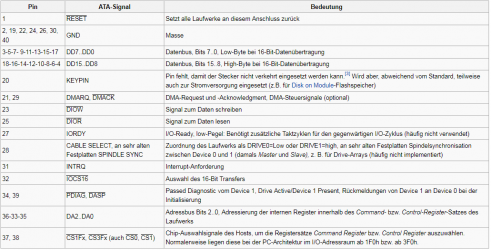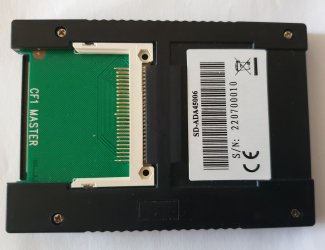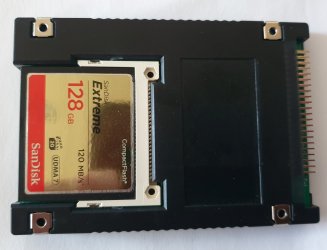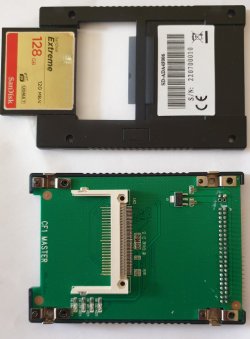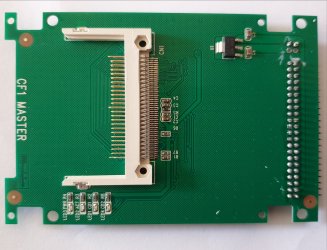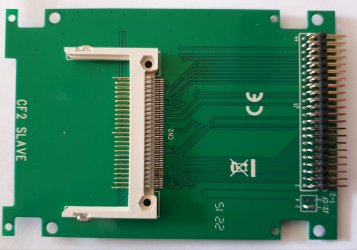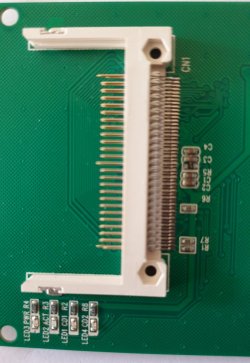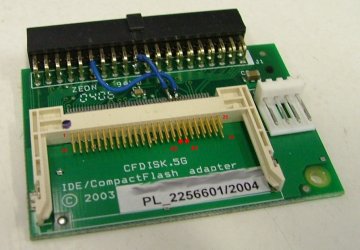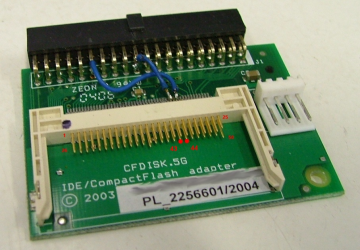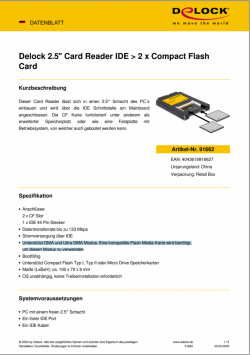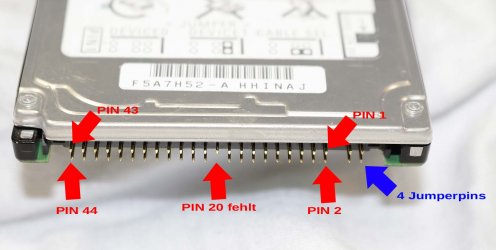Aber ich hab noch etwas interessantes gefunden:
If you buy an UDMA-capable CF card based on the past impression that there's nothing to go wrong with the True IDE mode, and based on the total lack of any warning in any relevant marketing and technical documentation, you have a good chance of suffering a nasty shock: you plug the card into your trusty CF-to-IDE socket, and the card appears dead!
The trouble is that, compared to PIO, the DMA modes (not just UDMA, but also MWDMA) need two more signals in the CF socket: DMA REQ and ACK. These two signals are nowadays commonly present in all "enhanced IDE" channels (usually integrated on-chip in the system south bridge), but many CF sockets on the market today lack those signals! In traditional IDE-enabled CF sockets, pin 43 is floating free and pin 44 is wired to +5V (power supply line). In a UDMA-capable socket, these should be wired to the UDMA signals, i.e. CF(43)->IDE(21) = DMA REQ and CF(44)->IDE(29) = DMA ACK.
Eventuell magst du da auch einmal durchmessen. Vielleicht ist deine "moderne" CF-Karte auch zu neu für die simplen Adapter und nur der SYBA macht das richtig.
Im hier vorgeschlagenen Bild sind die entsprechenden Pins zumindest nahe bei deinem Hühnerfutter auf dem SYBA:
Anhang anzeigen 662396
Hier auch vorgeschlagene Lösungen (zusätzlich wird noch gesagt, dass man den PC-Controller umkonfigurieren könnte, aber das fällt bei unserem BMW ja aus.
- You may try modding your CF socket to support DMA. You may need to lift pin 44 of the CF socket off the PCB, to detach it from +5VSB, or cut the trace connecting to it. And, wire the two CF pins to the corresponding IDE pins in some exposed connector (if any). On many boards, this will be impossible. It's also a problem if you'd need to mod many pieces of some embedded motherboard like that.
- Return the UDMA-capable CF card and try using some card that's not DMA capable (up to PIO4 only).
- Try getting a configuration util or an alternative firmware for the CF card that you've purchased, which will make it advertise PIO only in its ATA capabilities (no DMA)
Quelle:
CompactFlash cards and DMA/UDMA support in True IDE (tm) mode
In
diesem Dokument gibt es noch eine Info, wie man prinzipiell Karten konfigurieren könnte (Seite 22):
The card can be configured in a True IDE Mode of operation. This card is configured in this mode only when the –OE input
signal is asserted GND by the host. In this True IDE Mode Attribute Registers are not accessible from the host. Only I/O
operation to the task files and data registers are allowed. If this card is configured during power on sequence, data registers are
accessed in word (16-bit). The card permits 8-bit accesses if the user issues a Set Feature Command to put the device in 8-bit
mode.
Sorry, dass ich dir nur Puzzleteile hinwerfe ohne Einordnung. Aber vielleicht hilft es dennoch ein wenig.
PS: Die Frage ist auch, ob das CIC DMA mag, oder eher PIO und wenn ja, welche Stufe.



 . Du bist halt kein mittelloser Student mit zu viel Freizeit
. Du bist halt kein mittelloser Student mit zu viel Freizeit  .
.